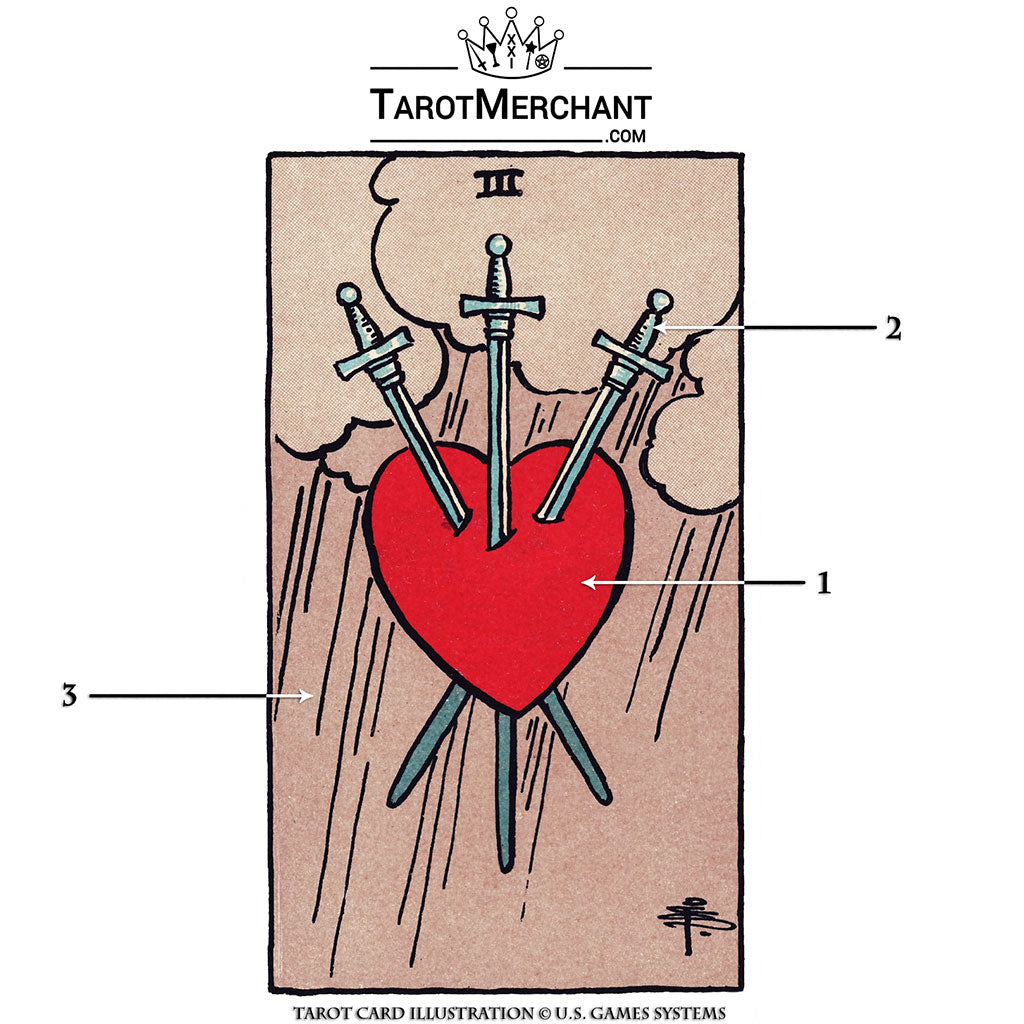The Three of Swords is one of the most iconic cards in the tarot deck, often evoking an immediate emotional response from those who encounter it. Its imagery, traditionally depicting three swords piercing a heart surrounded by rain or stormy skies, generates a visceral understanding of heartache, sorrow, and emotional turmoil. But what does this prescient card truly signify when it appears in a reading? Can it be reframed as not merely a harbinger of pain, but also an opportunity for growth and resilience? Let’s unravel the multifaceted meanings of the Three of Swords.
At its core, the Three of Swords represents deep emotional conflicts and pain, often associated with relationship strife. This card frequently surfaces during moments of betrayal, loss, or heartbreak. Imagine a romantic relationship that has recently come to an abrupt end. You are left grappling with the myriad emotions: sadness, anger, and an overwhelming sense of loss. The Three of Swords serves as a beacon, guiding you to confront these visceral feelings instead of avoiding them.
Yet, while the imagery and initial meaning can seem utterly bleak, there is a resounding theme of hope woven through this card’s narrative. It beckons you to ask: what can be learned from this pain? The experience of sorrow, though hardly enjoyable, often cultivates resilience. In the post-relationship landscape, you may come to understand your needs more profoundly, identify patterns in your choices, and ultimately emerge stronger. Herein lies the fundamental challenge posed by the Three of Swords: how do we transform heartbreak into a catalyst for personal evolution?
When conducting a tarot reading, the position of the Three of Swords also plays a significant role in interpreting its message. For instance, appearing in the past position may suggest that the querent has recently traversed a painful experience but shows signs of recovery. It is essential to acknowledge this pain as part of the healing journey. Conversely, its appearance in the present position might indicate that distress is currently at the forefront of the querent’s life, crying out for acknowledgement and resolution. This prompts the reflection: how can one skillfully navigate through such turbulent waters?
Beyond romantic heartaches, the card can also embody the betrayal of friendship or family ties. Imagine the fallout of an unexpected revelation—perhaps a close friend has divulged a secret that alters the fabric of your relationship. This jarring experience can evoke feelings of betrayal and distrust, causing you to double-check the authenticity of other relationships in your life. Here, the Three of Swords acts as both warning and guide, encouraging discernment in your interpersonal dealings while simultaneously allowing you to recalibrate your circle of trust.
While interpreting the Three of Swords, it is vital to recognize its elemental connections to air and the intellectual realm. The swords denote conflict, thoughts, and communication, offering insights that are not only emotional but also cognitive. One must ponder: how often do we trap ourselves in negative thought cycles after experiencing grief? This card challenges you to scrutinize your mental patterns, inviting clarity and resolution. Are you allowing your heart’s wounds to cloud the broader perspective? The Three of Swords urges a recognition of this influence, advocating for mental fortitude alongside emotional healing.
Transitioning from pain to potency, consider how the energy of the Three of Swords might serve as a springboard for artistic expression. Many renowned artists, writers, and musicians have channeled their heartbreak into powerful creations. The visceral feelings associated with this card can fuel creativity, leading to something profoundly beautiful that serves not just as catharsis for the creator but resonates deeply with others who have felt similar pangs of anguish. This forms yet another layer of the Three of Swords; it is a poignant reminder of art’s ability to process and transcend emotional suffering.
While it may be challenging, allow yourself to accept the gift the Three of Swords offers—acknowledging that while sorrow is a universal experience, it is not the end of the journey. With intentional effort and self-compassion, the learning derived from these emotional trials can lead to profound personal transformation. Here lies the paradox: heartbreak, while debilitating, often lays the groundwork for future growth. The process is not linear, nor can it be rushed, but embracing the lessons inherent in this card’s message can illuminate the path ahead.
In conclusion, the Three of Swords is steeped in multifarious implications, serving both as a reflection of human pain and as a call to endure, learn, and ultimately thrive. Instead of viewing it purely as a card of sorrow, contemplate its ability to guide you through the tumult. When faced with emotional upheaval, ask yourself: how can you shift the narrative from one of despair to a story of resilience and growth? In every slice of heartache lies the potential for healing, reclamation, and renewal. Embrace the journey, for therein lies the heart’s greatest wisdom.









Leave a Comment